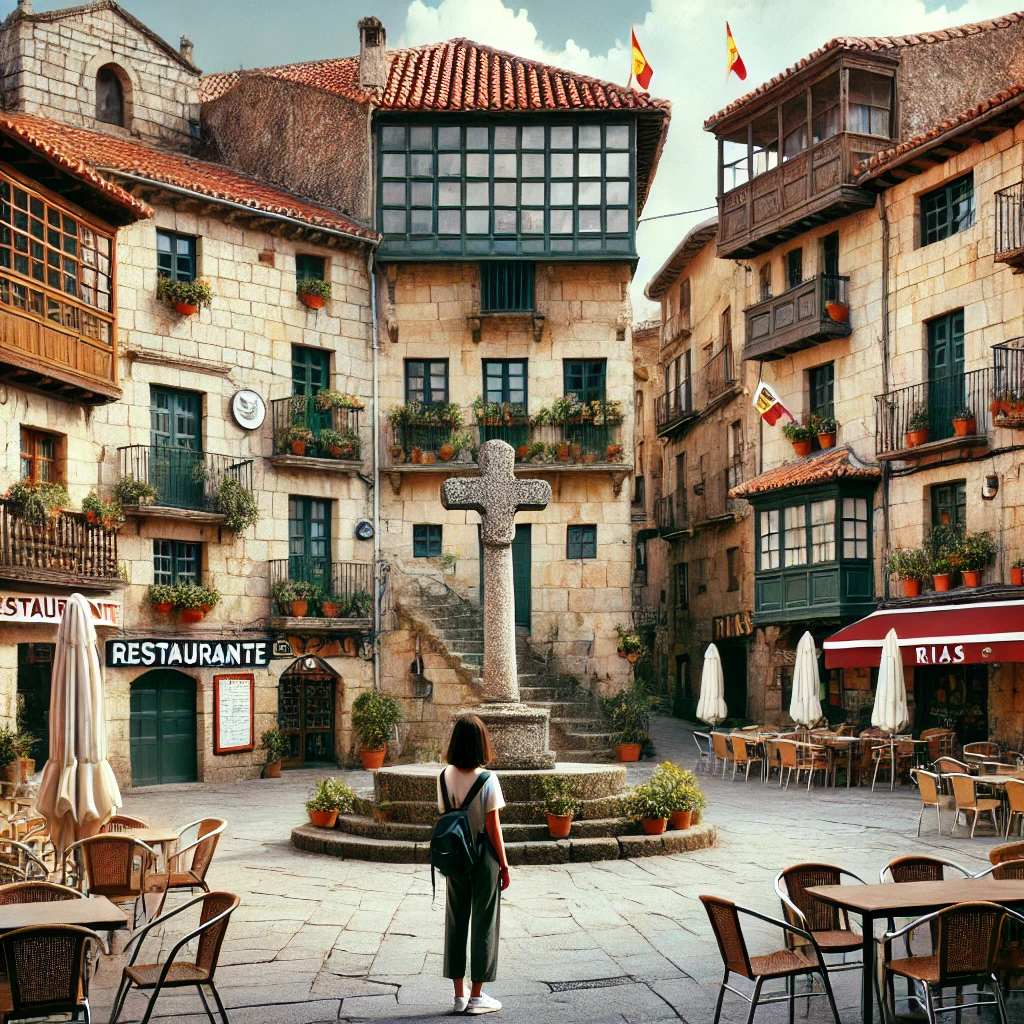ChatGPT:
Pontevedra is a picturesque city located in the Galicia region of northwestern Spain. Known for its well-preserved historical center, Pontevedra offers a blend of medieval architecture, charming plazas, and a vibrant cultural scene. The city has been recognized for its pedestrian-friendly urban design, making it an ideal destination for leisurely exploration.
Overall, Pontevedra is celebrated for its blend of history, culture, and modern urban design, making it a delightful destination in Galicia.
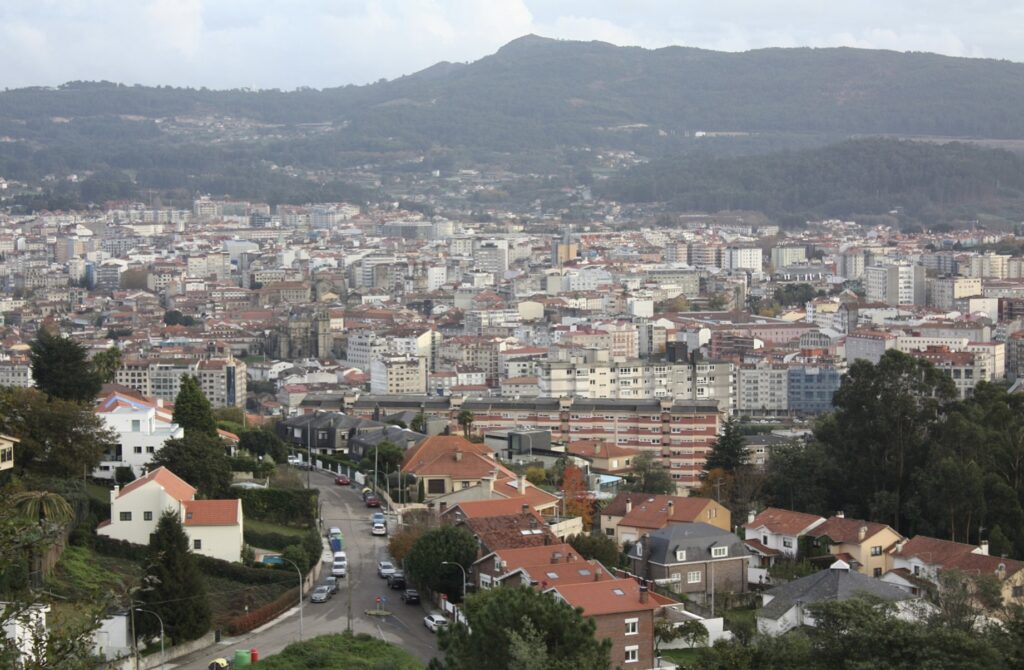
Pontevedra has a rich history that dates back to ancient times. Its development over the centuries reflects a blend of cultural influences, economic shifts, and urban planning.
Ancient Origins
The origins of Pontevedra can be traced back to pre-Roman times, when the area was inhabited by Celtic tribes known as the Gallaeci. The strategic location of Pontevedra, near the Lérez River and the Ría de Pontevedra, made it an important site for these early communities.
During the Roman period, Pontevedra became more established as a settlement. The Romans recognized the area’s value as a crossing point for trade routes and built a bridge over the Lérez River, which gave the city its name (“Ponte” means bridge in Galician and Spanish, and “vedra” is believed to be derived from the Latin word “veteri,” meaning old or ancient).
Medieval Flourishing
Pontevedra’s true growth began in the Middle Ages, particularly in the 12th and 13th centuries, when it became a significant commercial and maritime center. The city’s port, located on the Ría de Pontevedra, facilitated trade with other regions of Spain and Europe, particularly in products like salt, wine, and fish. The fishing industry, especially sardine fishing, was a major economic driver during this period.
The medieval period also saw the construction of many of Pontevedra’s historic buildings and structures, including the Church of Santa María la Mayor, a Gothic masterpiece built by the city’s seafaring guilds. The layout of Pontevedra’s old town, with its narrow, winding streets and open plazas, also took shape during this time.
Renaissance and Decline
In the 15th and 16th centuries, Pontevedra continued to thrive, and its wealth and influence were reflected in the construction of numerous religious and civic buildings. The city became one of Galicia’s most important urban centers, renowned for its shipbuilding and maritime trade.
However, by the late 16th century, Pontevedra began to decline. Several factors contributed to this downturn, including the silting of the Lérez River, which made the port less accessible, and the rise of other Galician ports like A Coruña and Vigo. Additionally, the political and economic instability in Spain during this period further hampered Pontevedra’s prosperity.
Modern Revival
Pontevedra experienced a resurgence in the 19th and early 20th centuries, particularly with the advent of the industrial revolution and improvements in transportation. The city expanded beyond its medieval walls, and new neighborhoods and public buildings were constructed.
One of the most significant developments in Pontevedra’s recent history has been its transformation into a model of urban design. Starting in the late 20th century, the city implemented a series of pedestrian-friendly initiatives, drastically reducing car traffic in the historic center and prioritizing public spaces for pedestrians and cyclists. These efforts have earned Pontevedra international recognition and awards for urban planning and sustainability.
Cultural and Social Development
Pontevedra has also developed as a cultural hub, with a focus on preserving and celebrating Galician heritage. The city hosts numerous festivals, such as the Feira Franca, which recreates a medieval fair, and the Festa da Peregrina, dedicated to the city’s patron saint. The Museo de Pontevedra is a key institution that showcases the region’s art, history, and archaeology.
Today, Pontevedra is known for its quality of life, historic charm, and commitment to sustainable urban development. It is a city that successfully blends its rich past with a forward-looking approach to modern living.
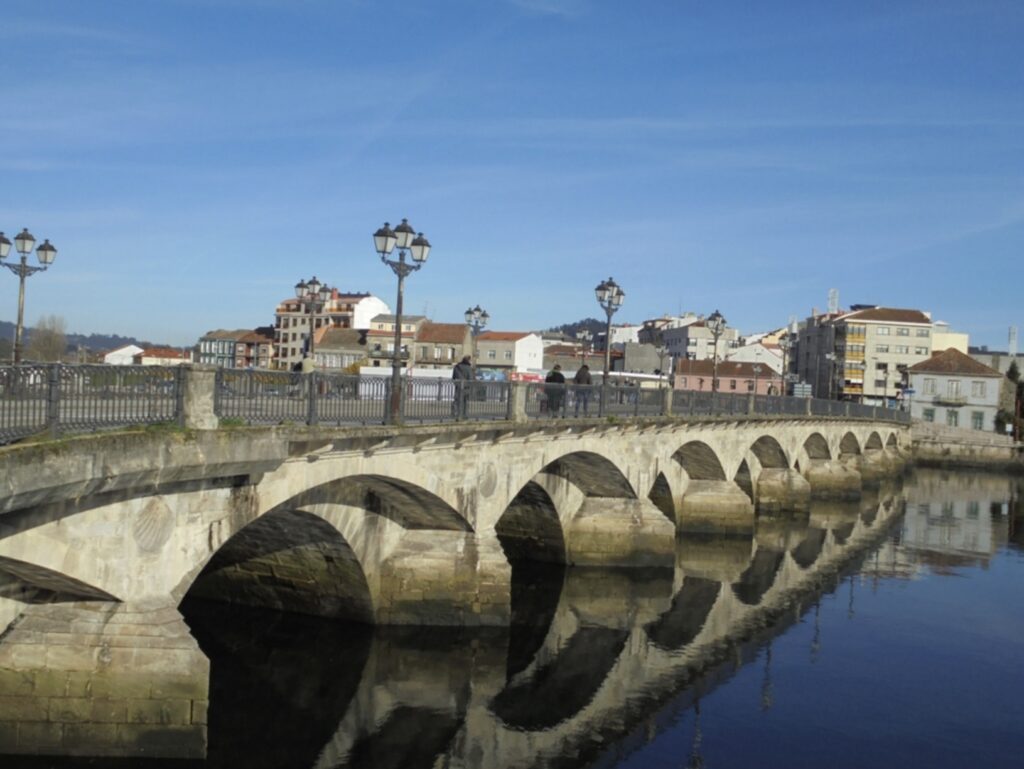
In the area around Pontevedra, particularly in the rural parts of Galicia, you will find a unique type of granary known as a hórreo. These traditional granaries are a distinctive feature of the Galician landscape and have been used for centuries to store grain, particularly corn, to keep it dry and safe from rodents.
Here are some key characteristics of hórreos:
- Elevated Structure: Hórreos are raised off the ground on stone pillars, called pegollos or esteos. These pillars often have flat stone tops, known as muelas, which prevent rodents from climbing into the granary.
- Ventilated Walls: The walls of hórreos are typically made of wood or stone and are constructed with slits or gaps to allow air circulation, ensuring that the stored grain stays dry and free from mold.
- Rectangular or Narrow Design: Most hórreos are long and narrow, resembling a small, elongated house. This shape is not only practical for storage but also helps in the ventilation process.
- Thatched or Tiled Roof: The roof of a hórreo is usually steeply pitched and made of either thatch or tiles, depending on the local tradition and availability of materials.
- Cultural Significance: Hórreos are more than just functional structures; they are a symbol of Galician heritage and are often decorated with carvings or other ornamental features. In some villages, you can find groups of hórreos together, which adds to their picturesque quality.
One of the most famous spots to see these granaries is the village of Combarro, near Pontevedra, where hórreos line the seafront, creating a striking visual against the backdrop of the Ría de Pontevedra. These granaries are often seen as iconic symbols of Galician rural life, representing the region’s agricultural past and architectural ingenuity.
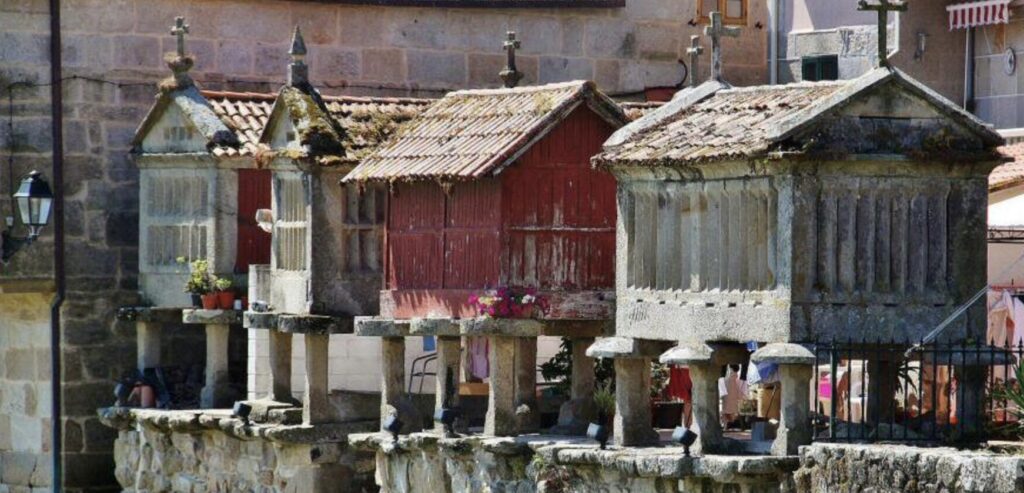
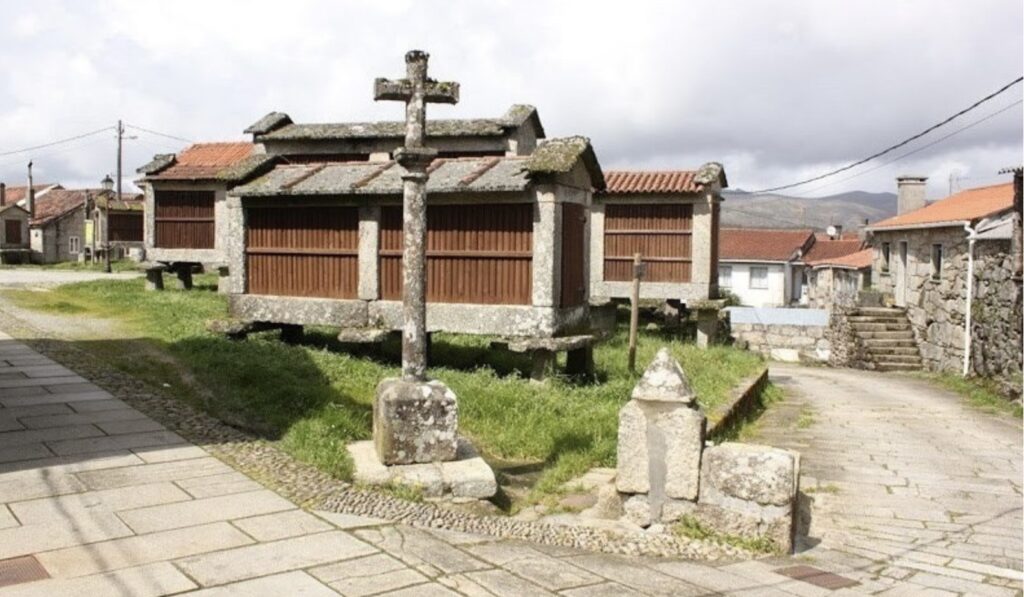
Here’s the list of historical monuments in Pontevedra:
Historical Monuments
- Basilica of Santa María la Maior:
- A Gothic-Renaissance church built by the seafaring guilds of Pontevedra in the 16th century. It’s known for its richly sculpted façade and beautiful interior.
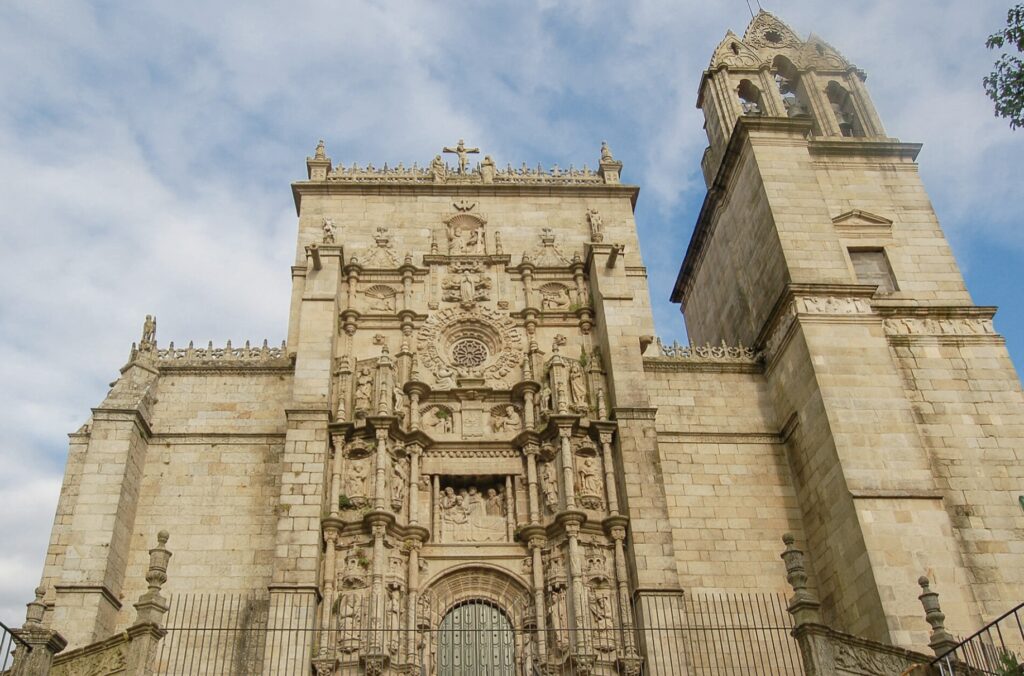
- Ruins of Santo Domingo:
- The remains of a 14th-century Dominican convent, these ruins are one of the oldest structures in Pontevedra. The site is now part of the Museo de Pontevedra, showcasing archaeological finds.
- Capela da Peregrina:
- This unique scallop-shell-shaped chapel, built in the 18th century, is dedicated to the Virgen Peregrina, the patron saint of the city and pilgrims on the Camino de Santiago.
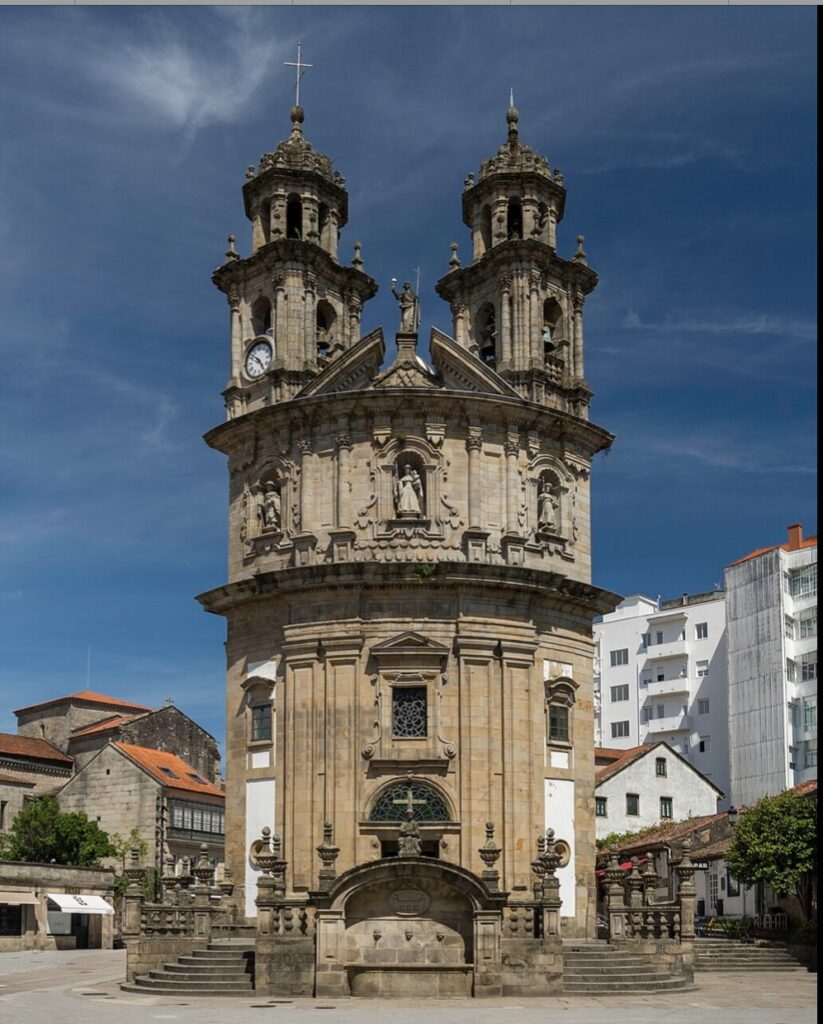
- Convent of San Francisco:
- A Gothic-style convent founded in the 13th century. It is one of the city’s oldest religious buildings, with a serene atmosphere and lovely cloisters.
- Palacio de Mugartegui:
- A Baroque palace from the 18th century, now serving as a cultural center. It is known for its impressive façade and elegant architecture.
- Pazo de Castro Monteagudo:
- Another Baroque palace that is part of the Museo de Pontevedra. This 18th-century building is notable for its detailed stonework and grand design.
- Plaza de la Leña:
- A charming square surrounded by historic buildings, including several pazos (manor houses). It’s one of the most picturesque spots in Pontevedra’s old town.
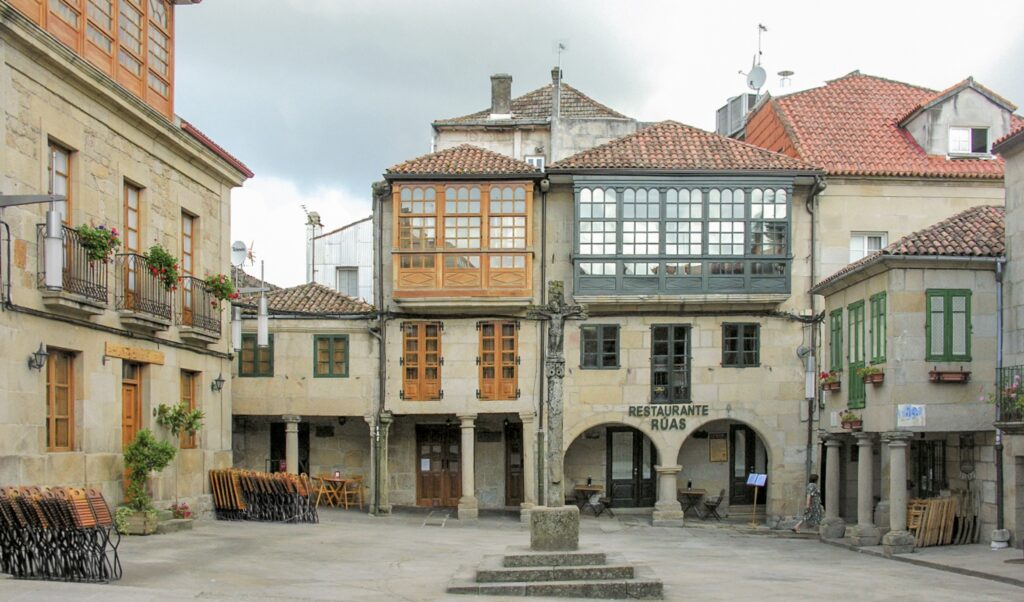
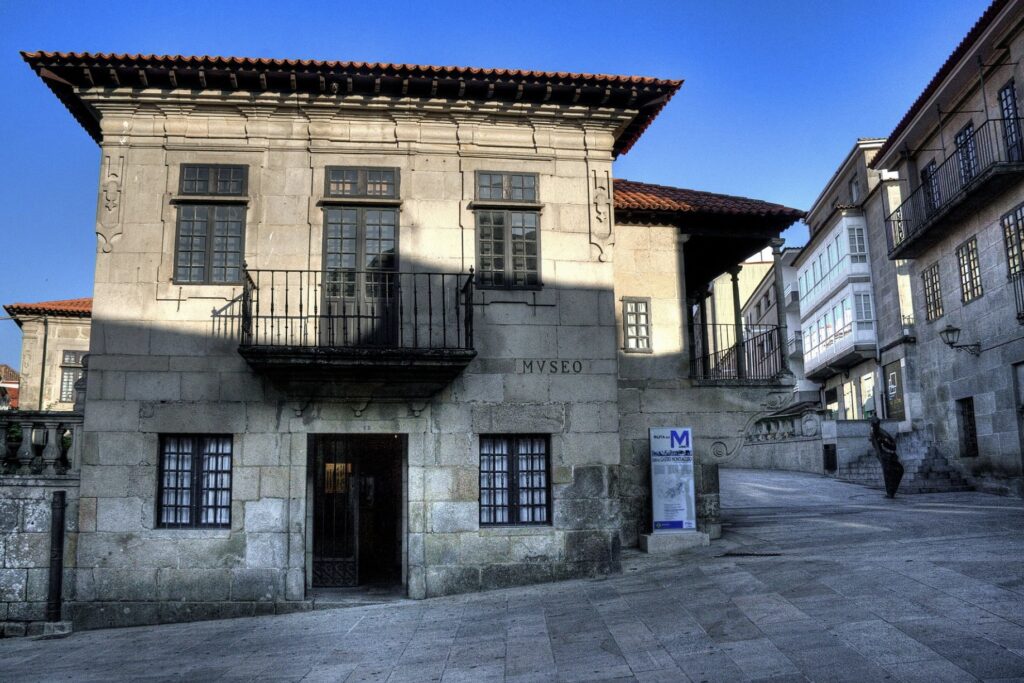
Tourist Attractions
1. Museo de Pontevedra:
• A comprehensive museum spread across several historic buildings in the city, including the Ruins of Santo Domingo and various pazos. It houses collections of Galician art, archaeology, and history.
2. Praza da Ferrería:
• One of the main squares in Pontevedra, surrounded by historic buildings, including the Church of San Francisco and the Convento de San Francisco. The square is a lively spot with cafes and fountains.
3. Teatro Principal:
• A historic theater that dates back to the 19th century. It is a cultural hub, hosting various performances and events throughout the year.
4. Alameda de Pontevedra:
• A beautiful park located near the old town, known for its grand trees, statues, and fountains. It’s a popular place for a leisurely stroll.
5. Ría de Pontevedra:
• The estuary that borders the city offers stunning views and opportunities for boating, fishing, and enjoying the coastal scenery. The nearby coastal areas, such as the town of Combarro, are also worth visiting.
6. Camiño de Santiago (Camino de Santiago):
• Pontevedra is an important stop on the Portuguese Way of the Camino de Santiago. Pilgrims pass through the city, and visitors can explore parts of this historic pilgrimage route.
7. Monumento aos Heroes de Pontesampaio:
• A monument commemorating the Battle of Pontesampaio, where local forces defeated Napoleon’s troops in 1809. It is located near the Ría de Pontevedra.
8. Mercado de Abastos:
• Pontevedra’s central market, where visitors can experience the local food culture. It’s a great place to buy fresh seafood, local produce, and other Galician specialties.These sites collectively offer a deep dive into the history, culture, and architectural beauty of Pontevedra, making it a rich and rewarding destination for travelers.
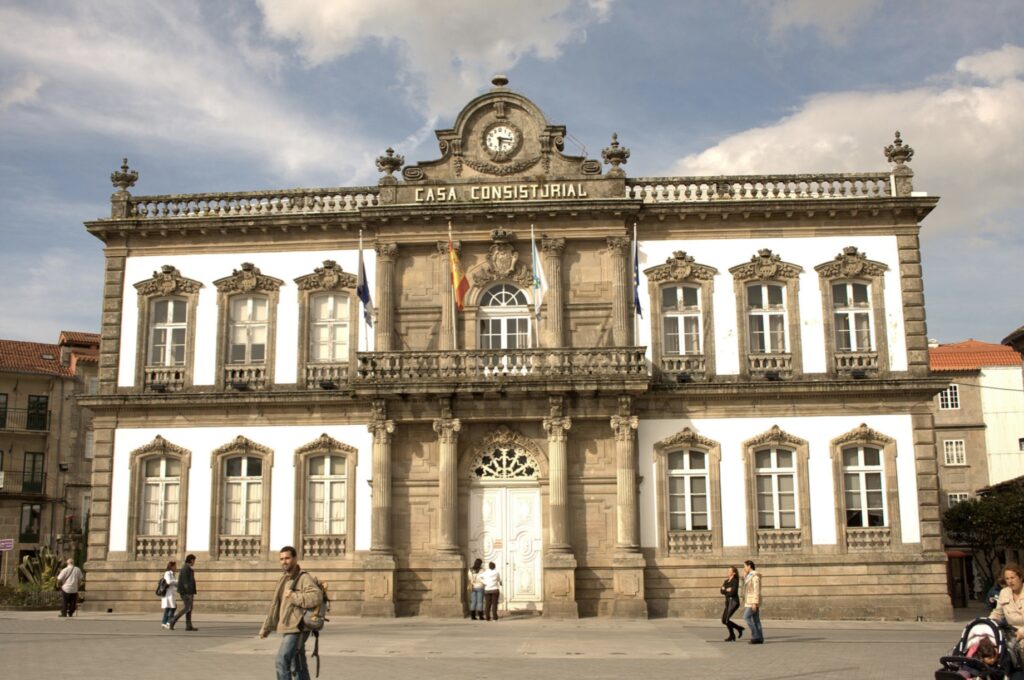

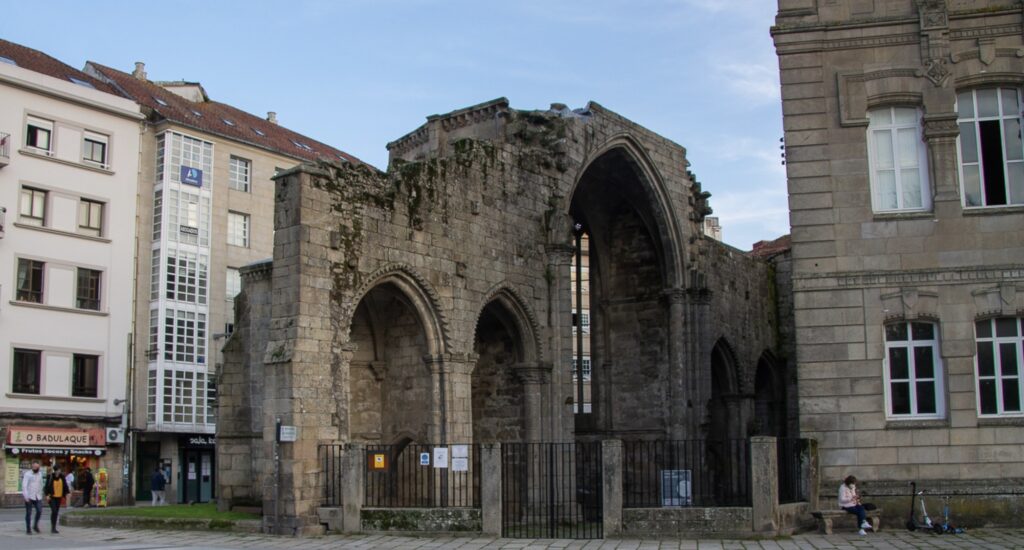
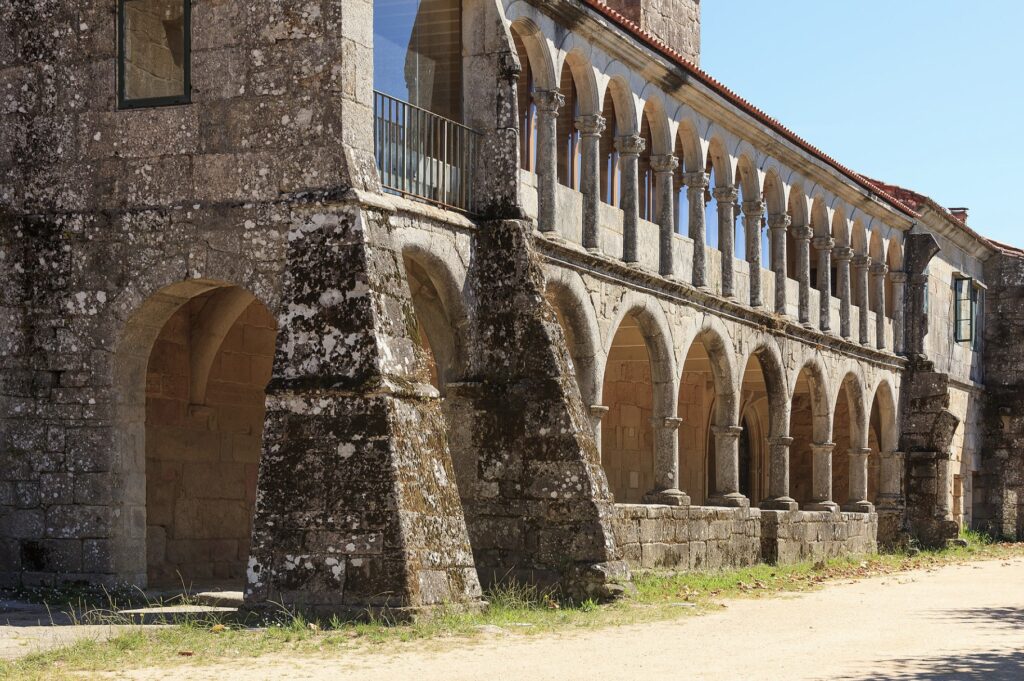
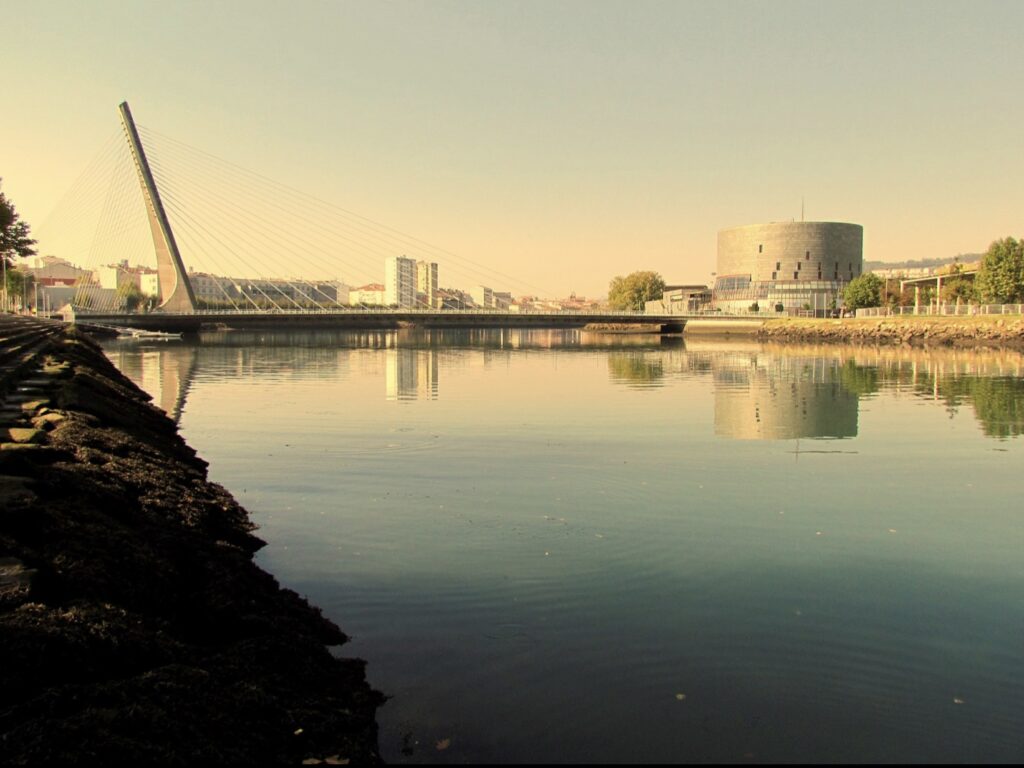
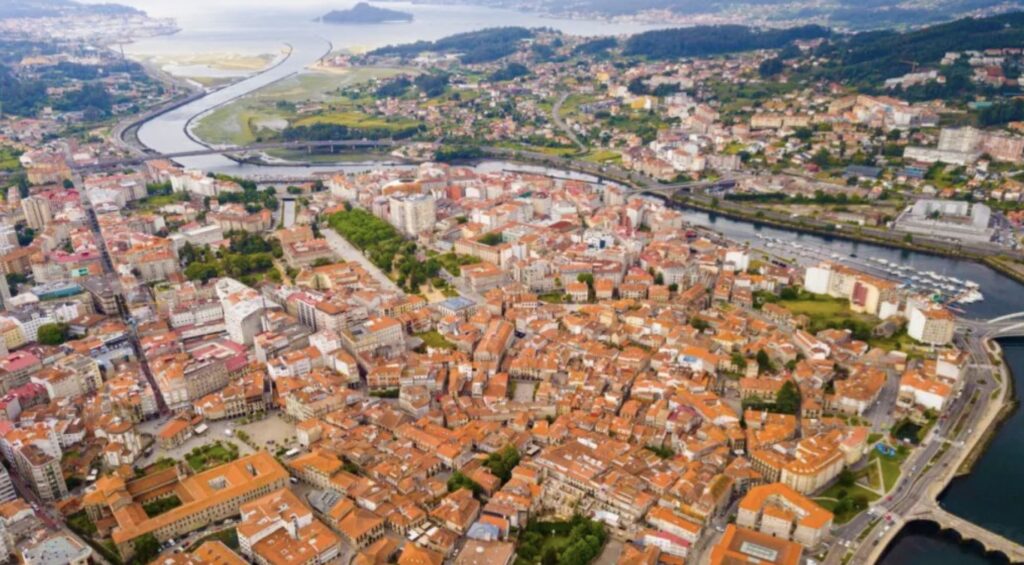
Here’s the itinerary for day trip to Pontevedra:
Morning
8:30 AM – Breakfast at Café Moderno
- Start your day with breakfast at Café Moderno, enjoying a traditional Spanish breakfast with tostadas and café con leche.
9:30 AM – Visit the Mercado de Abastos
- Explore the Mercado de Abastos to experience the local market atmosphere. Browse through fresh seafood, meats, vegetables, and other regional specialties.
10:30 AM – Explore the Old Town
- Continue your exploration of Pontevedra’s historic center. Visit key sites such as the Praza da Ferrería, Church of Santa María la Mayor, and the Capela da Peregrina.
12:00 PM – Visit the Museo de Pontevedra
- Spend time at the Museo de Pontevedra, exploring the collections in the Ruins of Santo Domingo and the Pazo de Castro Monteagudo.
Afternoon
1:30 PM – Trip to Combarro
- Travel to Combarro to admire the hórreos and traditional architecture of this picturesque village.
2:00 PM – Lunch in Combarro
- Enjoy lunch at a seaside restaurant in Combarro, savoring Galician specialties like pulpo a feira, empanada gallega, and percebes with Albariño wine.
4:00 PM – Café Break
- Return to Pontevedra and enjoy a mid-afternoon break at a local café. Savor a tarta de Santiago with a coffee or orujo liqueur.
5:00 PM – Relax at Alameda Park
- Spend some time relaxing at Alameda de Pontevedra, enjoying a leisurely stroll through the park.
6:00 PM – Visit the Convent of San Francisco
- Visit the Convent of San Francisco to explore its Gothic architecture and peaceful gardens.
Evening
7:30 PM – Dinner at a Local Restaurant
- Conclude your day with dinner at a traditional Galician restaurant. Enjoy dishes like lacón con grelos, caldo gallego, and queso tetilla for dessert.
9:00 PM – Evening Stroll
- Take a peaceful evening stroll through the beautifully illuminated streets of Pontevedra’s old town.
This revised itinerary aligns with your preferences for a mid-afternoon café break while ensuring a full and enjoyable day in Pontevedra.
